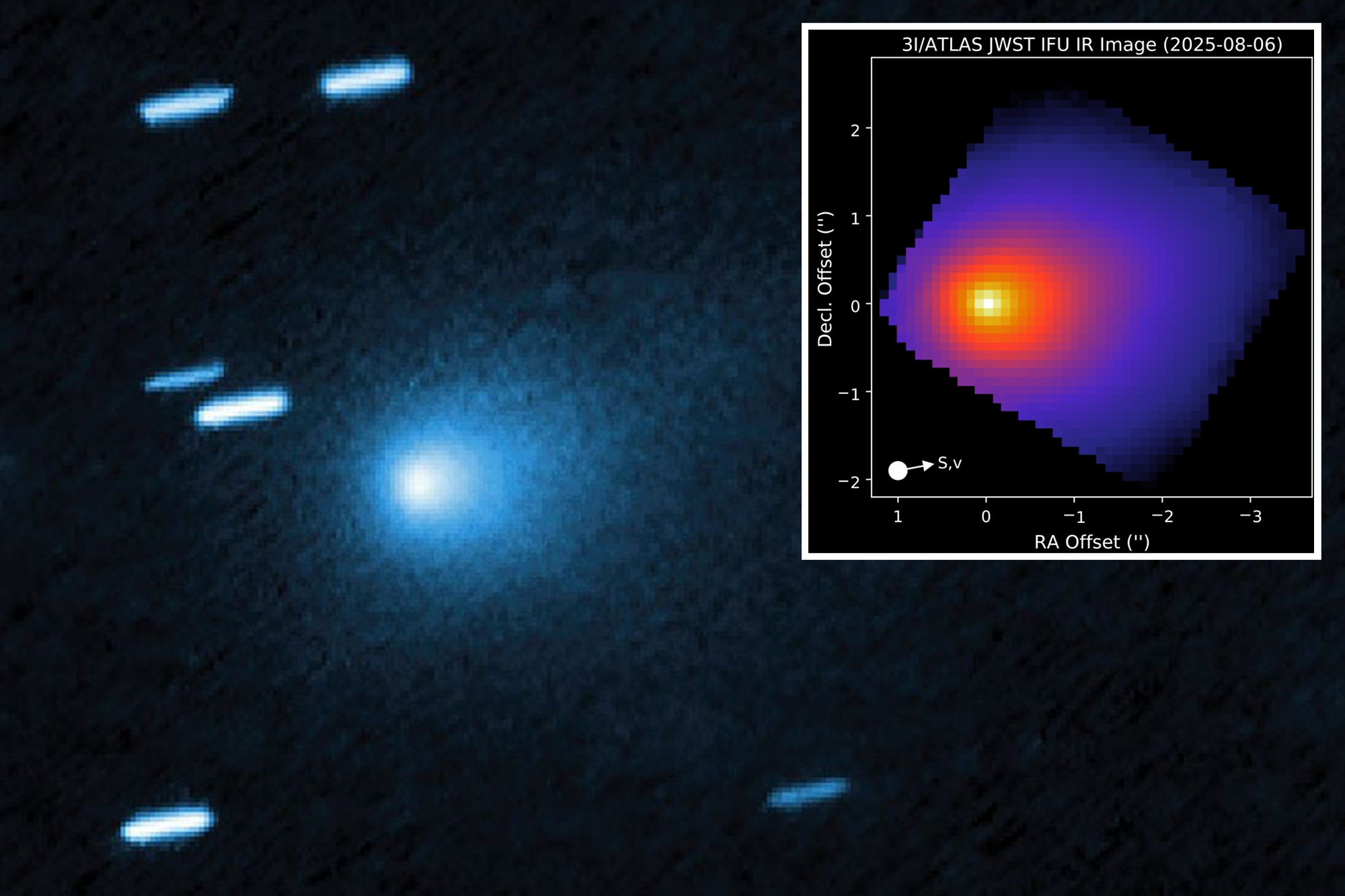Science
Interstellar Object 3I/ATLAS Emits Unique Metal Alloy, Says Scientist

The interstellar object known as 3I/ATLAS, roughly the size of Manhattan, is emitting a metal alloy never before observed in nature, according to a statement from Dr. Avi Loeb, an astrophysicist at Harvard University. New images captured by the Keck II Telescope in Hawaii in August reveal that this unusual object is releasing a plume containing four grams of nickel per second, without any detectable iron. This phenomenon is unprecedented in the study of comets.
The alloy produced by 3I/ATLAS is identified as nickel tetracarbonyl, a compound typically associated with industrial processes. “There is only one place where that is known to exist and that is in industrially produced nickel alloys,” Loeb explained. “This was never observed for any other object.” In contrast, traditional comets, including two previous interstellar comets, typically exhibit comparable amounts of nickel and iron.
Unusual Characteristics of 3I/ATLAS
The study conducted by researchers at the Keck Observatory suggested that the nickel-emitting process could be a natural occurrence. However, Loeb expressed skepticism, emphasizing that such refined compounds have only been manufactured by humans. “This was a process that we can imagine only because it was used in industry,” he stated.
Another intriguing aspect of 3I/ATLAS is its lack of a cometary tail, which is typically observed in these celestial bodies. “We usually see beautiful tails extending from the object away from the Sun, and in this case, there was no evidence for such a tail,” Loeb noted. Instead, the Hubble Space Telescope captured images showing a stream of materials, weighing approximately 330 pounds per second, directed towards the Sun.
Loeb raised questions about this unique jet-like feature, pondering, “Why are we seeing a jet pointed at the Sun?” The material stream primarily consists of carbon dioxide and water, along with trace amounts of cyanide and nickel, but notably absent of iron, according to the American Astronomical Society.
Awaiting Further Observations
As the scientific community continues to analyze this extraordinary object, skywatchers worldwide eagerly anticipate the release of images taken by the Mars Reconnaissance Orbiter from October 4 to October 7, 2023. These images, captured as 3I/ATLAS passed within 12 million miles of Mars, are expected to provide the closest and most detailed views of the object during its brief journey through the inner Solar System.
Unfortunately, the release of these images has been delayed due to the ongoing government shutdown, which has furloughed staff in the NASA communications department. “Who cares about the communication departments? We want to see the data from the scientists,” Loeb remarked, expressing frustration at the situation.
As research continues, the scientific community remains focused on uncovering the mysteries surrounding 3I/ATLAS, a celestial object that challenges our understanding of interstellar materials and their properties.
-

 Science1 month ago
Science1 month agoUniversity of Hawaiʻi Leads $25M AI Project to Monitor Natural Disasters
-

 Science2 months ago
Science2 months agoResearchers Achieve Fastest Genome Sequencing in Under Four Hours
-

 Business2 months ago
Business2 months agoIconic Sand Dollar Social Club Listed for $3 Million in Folly Beach
-

 Politics2 months ago
Politics2 months agoAfghan Refugee Detained by ICE After Asylum Hearing in New York
-

 Business2 months ago
Business2 months agoMcEwen Inc. Secures Tartan Lake Gold Mine Through Acquisition
-

 Health2 months ago
Health2 months agoPeptilogics Secures $78 Million to Combat Prosthetic Joint Infections
-

 Lifestyle2 months ago
Lifestyle2 months agoJump for Good: San Clemente Pier Fundraiser Allows Legal Leaps
-

 Science2 months ago
Science2 months agoMars Observed: Detailed Imaging Reveals Dust Avalanche Dynamics
-

 Health2 months ago
Health2 months agoResearcher Uncovers Zika Virus Pathway to Placenta Using Nanotubes
-

 Entertainment2 months ago
Entertainment2 months agoJennifer Lopez Addresses A-Rod Split in Candid Interview
-

 World2 months ago
World2 months agoUS Passport Ranks Drop Out of Top 10 for First Time Ever
-

 Business2 months ago
Business2 months agoSan Jose High-Rise Faces Foreclosure Over $182.5 Million Loan









